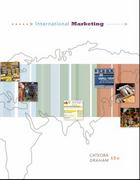Question
1. The National Development Council was established in: (a) 1948, (b) 1950, (c) 1951, and (d) 1952. 2. There is a subject called economic planning:
1. The National Development Council was established in: (a) 1948, (b) 1950, (c) 1951, and (d) 1952.
2. There is a subject called economic planning: [Asstt Grade 1991] [Asstt Grade 1991] [Asstt Grade
(a) in the Union List (b) in the State List (c) in the Concurrent List (d) in any special list (a) in the Union List (b) in the State List (c) in the Concurrent List (d) unspecified in any special list
3. The government relies on the following sources for internal financing of Five-Year Plans: [National Defense Authorization Act of 1991]
(a) solely taxation; (b) both taxation and public borrowing
c) borrowing and deficit financing by the government
d) fiscal policy, government borrowing, and deficit financing Answer: (a)
4. The National Development Council receives administrative support from the following sources:
a) The Planning Commission; b) The Finance Commission; c) The Administrative Reforms Commission; and d) The Sarkaria Commission. (a) The Five (b) The Five (c) The Five (d) The Five (e) The Five
5. India's Five Year Plans aim to industrialize the country by implementing: [NDA 1991]
The public sector (a) the private sector (b) the public, private, joint, and cooperative sectors (c) the public, private, joint, and cooperative sectors
d) enhancing cooperation with non-resident Indians
6. The Planning Commission is : [UP PCS 1994]
(a) a Ministry
(b) a Government department
(c) an Advisory body
(d) an Autonomous Corporation
7. Which of the following statements is correct? [AAO 1993]
(a) Planning Commission is a constitutional body
(b) The Prime Minister is the Chairman of the Planning Commission
(c) The Minister of Planning is always necessarily the Deputy Chairman of Planning Commission
(d) The draft plan is prepared by the National Development Council
8. The principal reason why national economic planning is still being pursued inspite of embracing a market economy since 1991 is that: [IAS 1994]
(a) the vast quantity of capital already deployed in the public sector needs to be nurtured
(b) the market economy is mainly confined to industry and commerce and central planning in agriculture is necessary
(c) it is a constitutional requirement
(d) Five Year Plans can continue to provide a long-term perspective to the economy in market friendly fashions
9. 'Take off stage' in an economy means: [CBI 1990]
(a) steady growth begins
(b) economy is stagnant
(c) economy is about to collapse
(d) all controls are removed
10. Planning in India derives its objectives from:
(a) Fundamental Rights
(b) Directive Principles of State policy
(c) Fundamental Duties
(d) Preamble
11. 70% of working population of India is engaged in:
(a) public sector
(b) primary sector
(c) secondary sector
(d) tertiary sector
12. Economic survey is published by :[IAS 1998]
(a) Ministry of Finance
(b) Planning Commission
(c) Govt. of India
(d) Indian Statistical Institute
13. Who is called the 'Father of Economics' ?
(a) Max Muller
(b) Karl Marx
(c) Adam Smith
(d) None of these
14. The concept of Five Year Plans in India was introduced by
(a) Lord Mountbatten
(b) Jawaharlal Nehru
(c) Indira Gandhi
(d) Lal Bahadur Shastri
15. India has: [CDS 1992]
(a) Socialistic economy
(b) Gandhian economy
(c) Mixed economy
(d) Free economy
16. India opted for 'Mixed Economy' in :
(a) Framing of the Constitution
(b) Second Five Year Plan
(c) Industrial Policy of 1948
(d) None of the above
17. Mixed economy means an economy where [CDS 2009]
(a) both agriculture and industry are equally promoted by the state
(b) there is co-existence of public sector along with private sector
(c) there is importance of small scale industries along with heavy industries
(d) economy is controlled by military as well as civilian rulers
18. India's economic planning CANNOT be said to be : [NDA 2002]
(a) indicative
(b) imperative
(c) limited
(d) democratic Ans: (b)
19. Which of the following could be said to have prevented the 'trickle down' effects in
Indian economy?
1. Increased dependence ofagriculture onpurchased inputs and privately managed irrigation
2. More employment of labour by larger landholding farmers
3. Lowered participation of women in agricultural workforce due to new technology
4. The failure of the Green Revolution
(a) 1 and 2
(b) 2 and 3
(c) 1 and 3
(d) 2 and 4
20. Which of the following are not correct assessments of the decades of India's Five-Year Plans?
1. There has been very low capital formation
2. Growth has favoured the better off
3. Production has increased substantially though often falling short of targets
4. The public sector has contributed nothing to economic growth
(a) 1 and 4
(b) 2 and 3
(c) 1, 2 and 3
(d) 3 and 4
Step by Step Solution
There are 3 Steps involved in it
Step: 1

Get Instant Access to Expert-Tailored Solutions
See step-by-step solutions with expert insights and AI powered tools for academic success
Step: 2

Step: 3

Ace Your Homework with AI
Get the answers you need in no time with our AI-driven, step-by-step assistance
Get Started


